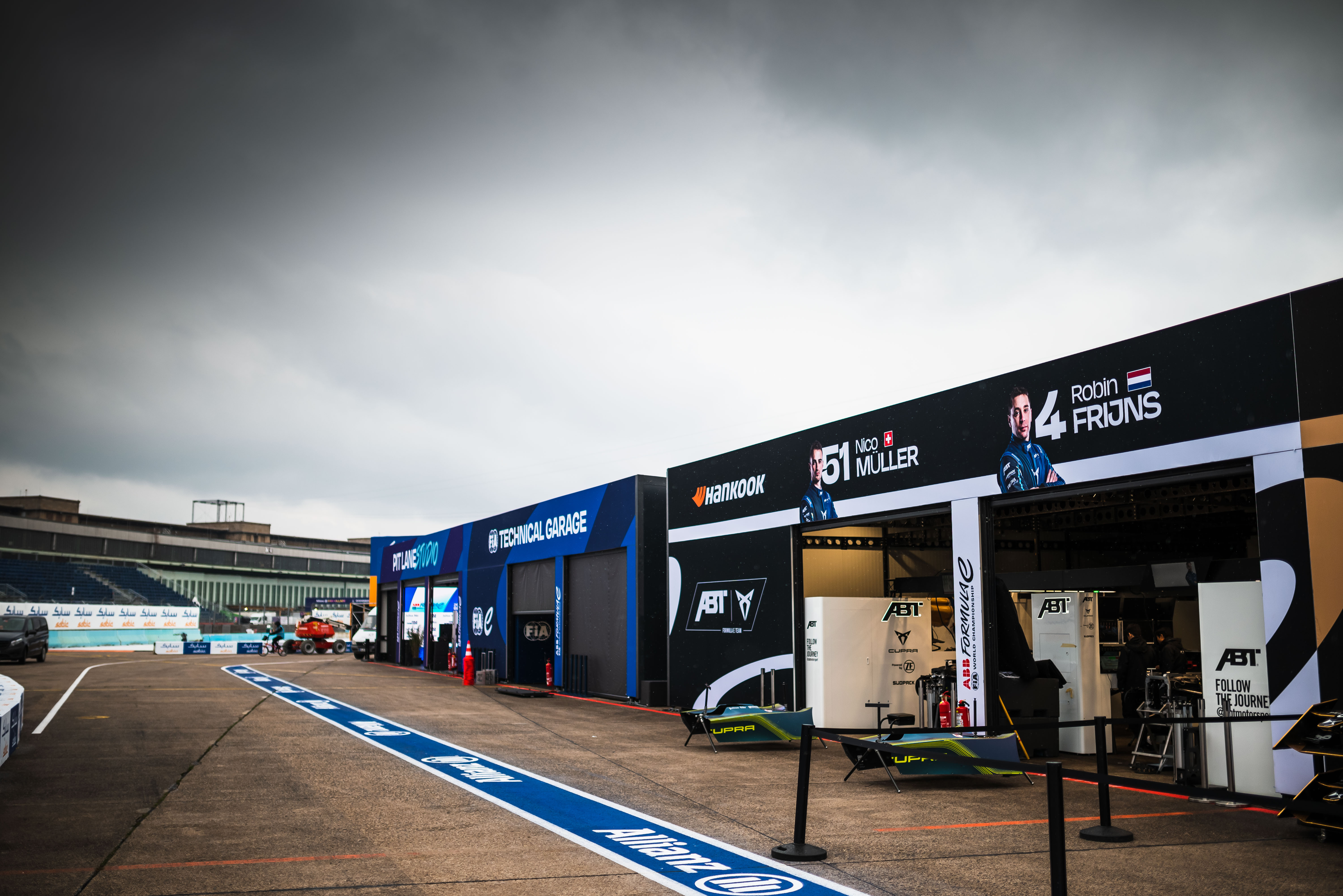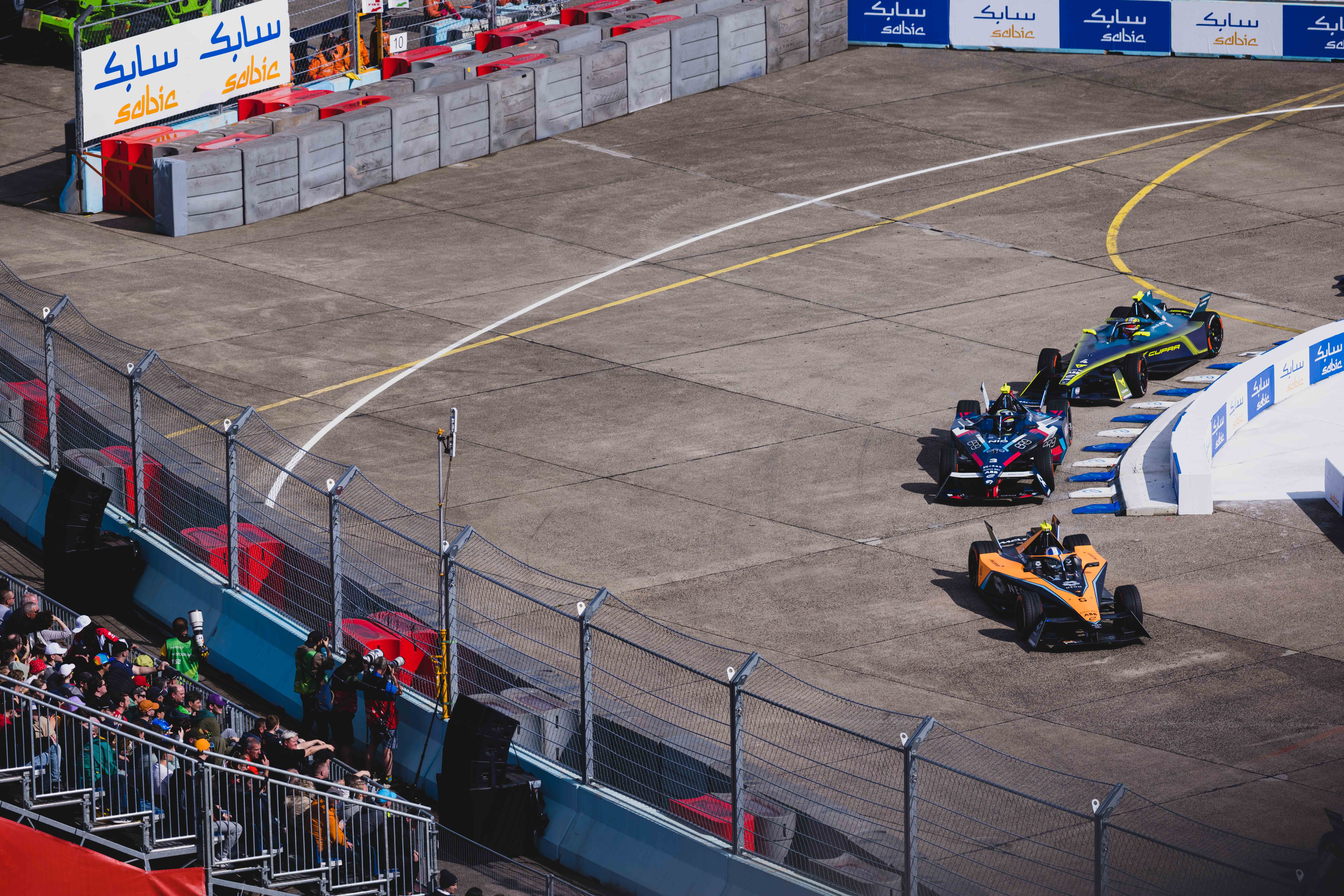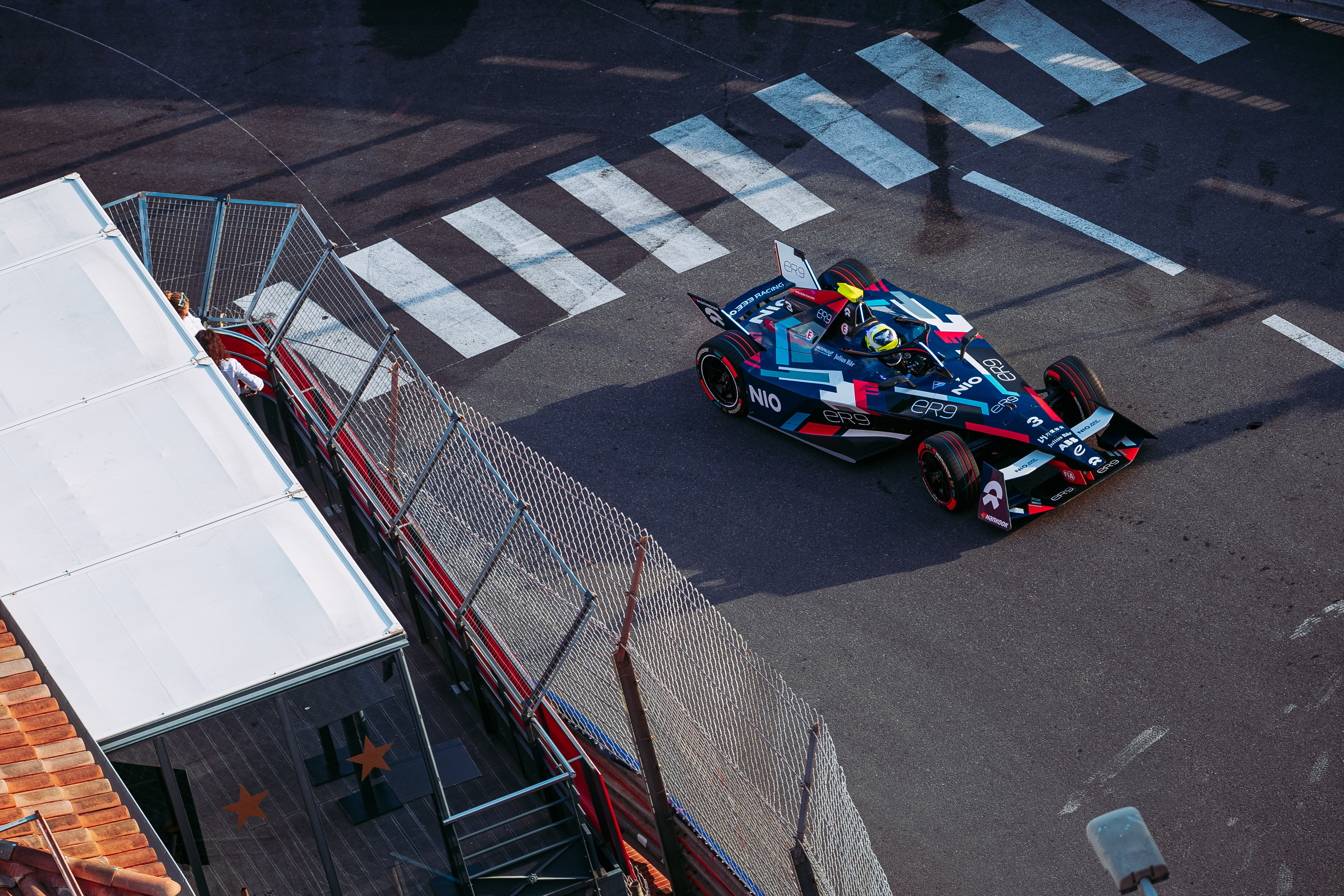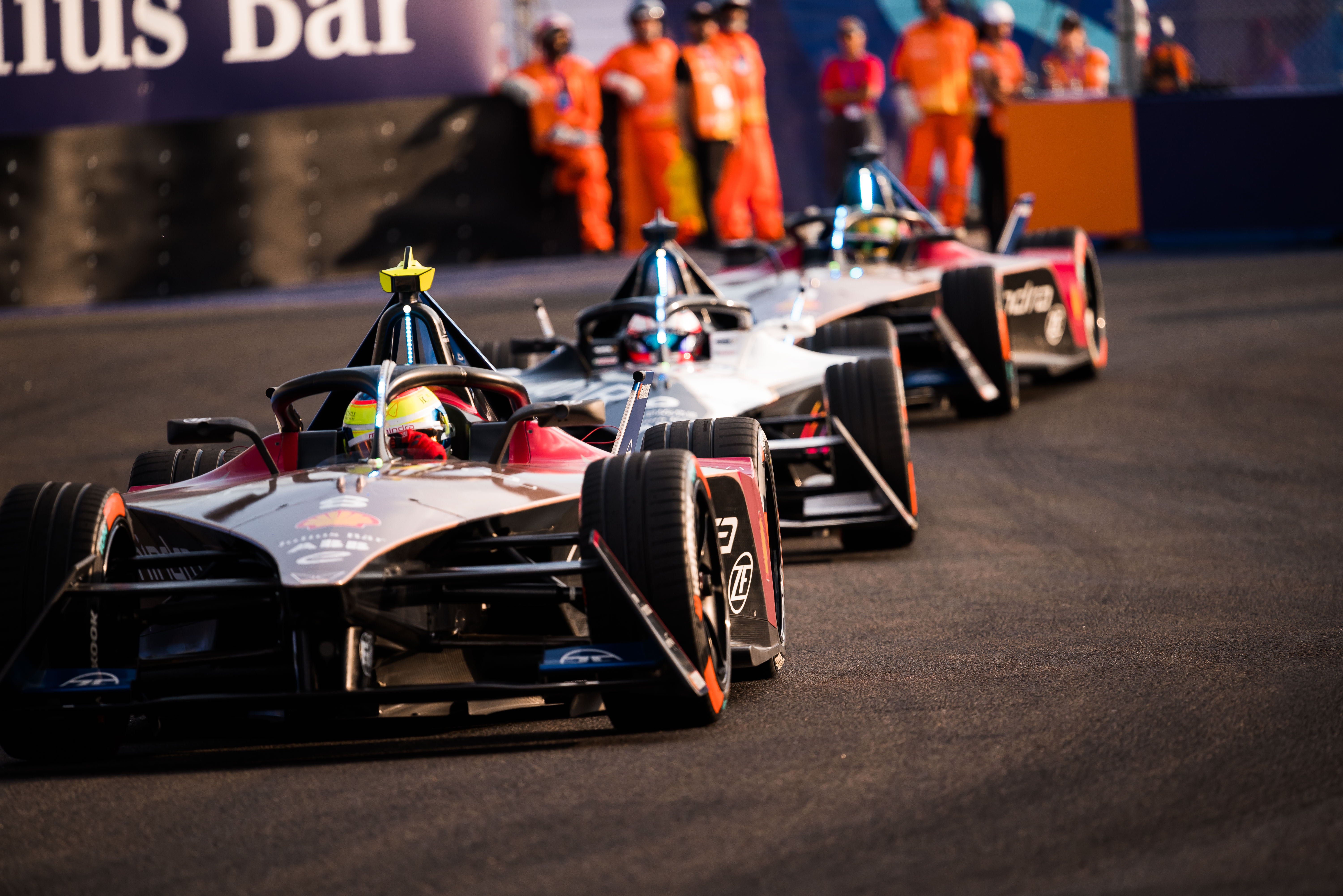The initial framework for the next Formula E car, which is set to debut in the 2026/27 season, is reaching completion and official tenders are set to go out this month with a decision to be made on the technology providers this October.
The Race can reveal that some of the outline of technical specifications for the new car may include 700kW max of regen, 600kW of maximum power release and an element of an active front axle system.
FE has yet to reveal the planned nomenclature for the new car, but The Race understands that the series wants to move away from the ‘Gen’ tags used so far – so while the successor to the new-for-2023 Gen3 car is being referred to in the paddock as Gen4 for now, it will have a different title as the process develops.
The options presently on the table and likely to be part of the tender requirements are two possible set-ups. One is a homologation of the same powertrain for front and rear, and the second being separate homologations of front and rear, axle specific. Additionally, the MGU (motor generator unit) and MCU (motor control unit) with a common front and rear end, and gearbox, differential with axle specific package could also feature on the tender list.
A different direction in tyre spec is also set to be introduced into Formula E with a high likelihood that slicks or a cut slick will be introduced. This would likely mean that there would be a set that is performance related and another for mixed conditions.

The outlines given by the Formula E Teams and Manufacturers Association to the FIA have also been submitted via discussion with Formula E sporting and technical consultant Dieter Gass.
He began his new role just before the Sao Paulo E-Prix in March and will be integral to working with both the manufacturers and the FIA to ensure a smoother process around the new rules set than was experienced with the recent Gen3 project.
The changes mooted for the next generation are set to significantly boost lap times, although speaking to The Race about the new tenders recently, FIA Formula E technical manager, Alessandra Ciliberti said that “lap time isn’t necessarily the target we are setting ourselves, it’s more of a consequence of what we are putting as input into the next evolution of the car concept”.
“What we do is essentially consult cell technology experts to know where the trend is going,” she added.
“Obviously when you talk about the next evolution of the car it’s 2027, but the development starts already now. So you need to find cell technology that allows you to deliver the maximum power level that you can deliver with it in a reliable way.
“I think the message I want to pass across is, for the next evolution of the car or whatever generation, every single component will keep reliability and safety as key criteria for the development, so we are looking at cell technologies that allow an increased power in energy density while being reliable.
“We don’t want to go too bespoke; we don’t want to put any constraint into the whole development, we want to go safe, still ensuring we remain at the cutting edge of electric technology.”
When asked about the suggested figures of 700kW regeneration and 600kW of power, Ciliberti confirmed that “these are numbers that we are seeing coming from what we believe the road map, in terms of cell technology, will allow us to do.
“But, of course, it will be validated once we go out with the tender and we receive bits from the potential providers.”
An FIA managed simulation working group will be integral to the new rules set.

“We regularly hold simulation working groups where we regroup with representatives from all competitors, we assess, we question the way we do things and try to incorporate any input we get,” said Ciliberti.
“But obviously for the next evolution of the car we’ll probably set a different one but still be working on simulating the car performance, to try and anticipate as much as we can any blocking point or any particular area we need to focus on.”
New collaborative approach
While the early phase of the current era of car has been mired in salvage strategies to soothe myriad technical issues, meetings at every E-Prix since the Cape Town event in late February have been taking place to ensure the process for the next model of Formula E car is carried through in great detail.
The complexity of prioritising both sporting and technical road maps has been a challenge for all parties, but it looks like progress has been swift in the last 10 weeks.
An additional difficulty has been understanding what can be possible in a newly budget restricted world championship. The unknown is whether teams can afford a so-called Gen3.5, some of which may indirectly inform the Gen4 cars for the 2026/27 season.
Also, under consideration has to be how far some elements of the technology can be opened up to specific manufacturers for development, for example can they design their own front MGUs in correlation to the financial regulations?
For now, peace appears to be breaking out from the discord of the Gen3 project, which patently had several issues in the way it was constructed and managed.
“In the time that I’ve been involved in the series, I haven’t seen it as collaborative as it is now,” McLaren team boss Ian James told The Race.
“We’re setting ourselves up for a really strong start to that process and we’re starting early enough, which is a really good thing to see.”
Despite the multitude of technical and sporting requirement details to sift through and nail the specifics of the tender details, the one commodity that is not controllable is time. It was a lack of this that ultimately triggered the Gen3 difficulties, and it is something that James and members of FETAMA are keen to manage as best they can.
The Race has learned that an extra period of approximately six-to-eight months is to be targeted for manufacturers to test their cars ahead of the start of the 2026-27 season. That would mean a timeline in which teams receive their hardware in approximately Q4 of 2025 or Q1 of 2026.
James says that the “timeline itself is super aggressive” and that “as much as I think it’s going to be tough to stick to it, I think it’s absolutely the right thing to do because it focuses everybody on getting things done in that timely fashion.
“It will certainly be more than we had in Gen3 and I think the right and suitable amount of time for the manufacturers.

“If you take a step back and you look at what we’re trying to achieve with Formula E, a lot of the discussions up until now have been around what do we anticipate coming in the next four years.
“We’re starting a process now which will build in the flexibility to be able to adapt in the future than to react to changes in technologies, react to changes in the direction the automotive industry is going to take as well.
“That’s going to ensure that the series itself remains as relevant as it needs to be.”
James also stated that nothing was specifically fixed at present. Although the tender will be open to all bids, current tyre supplier Hankook is believed to be planning to stay in Formula E and submit a tender that will incorporate the provision for a range of tyres rather than a one size fits all condition product.
“I don’t think anything’s really fixed at the moment from a tyres perspective and I think that what needs to happen now is the simulation work to ensure that,” said James.
“The tracks that we’re going to be racing on, the make-up of the car, what do we want to achieve from a lap time perspective – is qualifying more important than the race or actually is that the right balance that you want to have?”

The FETAMA chair also emphasised the need for all parties to be happy with the next Formula E cars, citing the intense private criticism drivers have of the Gen3 cars.
The teams and drivers were briefed by the promoters at Valencia last December to not be overly critical of the cars in public, something which several drivers have privately said has concerned them.
When asked about this aspect of Gen4, James said: “I’m not a driver, I’m not having to drive the cars, I know it would be naive to pretend that, or ignorant, to pretend that there hasn’t been some criticism of what we’ve currently got in Gen3.
“I don’t think it’s harmed the racing one bit at the moment, to be honest with you, and that actually has quietened things down a little bit in terms of the criticism on that side.
“We’re open for all ideas at the moment and all opportunities, whether it be tyres or other technical aspects of the car that are going to add to the show.”






